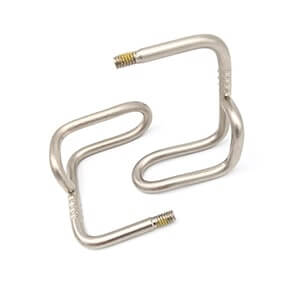Get unique, complex parts easily. No matter your requirements, Chaoyi Spring creates hard-to-produce coil springs and wire forms.
Let us help you create the custom wire form you need, from S-hooks and J-hooks to utility hooks and more.
We work closely with customers across a wide range of industries, helping them design and manufacture made-to-order parts.
Why choose Chaoyi Spring? We prioritize customer-focused collaboration, modern equipment and the latest technology to make your parts per print.
Find the information and guidance you need, from measuring a spring to learning about materials, placing an order and much more.
Compressing coil springs is a common task for mechanics, DIY enthusiasts, and anyone working on vehicles or machinery. It's essential for tasks like replacing shocks, struts, or other components. But


Compressing coil springs is a common task for mechanics, DIY enthusiasts, and anyone working on vehicles or machinery. It's essential for tasks like replacing shocks, struts, or other components. But compressing springs can be dangerous if not done correctly. This guide will provide you with a step-by-step process on how to safely compress coil springs, along with essential safety tips and best practices.

Coil springs are essential components in vehicles, machinery, and other applications. They are designed to absorb shock and vibration, providing a smoother ride and protecting the vehicle's frame and components. In many situations, you may need to compress a coil spring. This could be to replace worn-out shocks or struts, install new suspension components, or perform other repairs.
Compressing coil springs is a task that requires caution. The stored energy in a compressed spring is significant, and if it suddenly releases, it can cause serious injury or damage. Here's why you need to take safety seriously:
Always prioritize safety when compressing springs.
To compress coil springs safely and effectively, you'll need the right tools and equipment. Here's a list of essentials:
Now let's walk through the process of compressing coil springs safely and effectively:
In some cases, you may be able to avoid compressing coil springs altogether. Here are some alternatives:
Compressing coil springs is a necessary task in vehicle repair, but it should always be approached with caution. Remember to prioritize safety, use the correct tools and equipment, and follow the steps outlined in this guide. If you are unsure about any aspect of the process, it's always best to seek professional assistance from a qualified mechanic.
By following these safety guidelines and best practices, you can safely compress coil springs and complete your automotive repairs with confidence. Remember, safety is paramount. Always err on the side of caution and prioritize the well-being of yourself and those around you. Happy wrenching!
Browse some of the custom wire forms and springs that we manufacture. Don’t see what you need? We specialize in made-to-order products that meet your application requirements.
Visit Our GalleryNeed a custom wire form or coil spring? We make it work. Fill out the contact form and a representative will respond within 1 business day. If you have a PDF or CAD file, you can submit to request a quote.